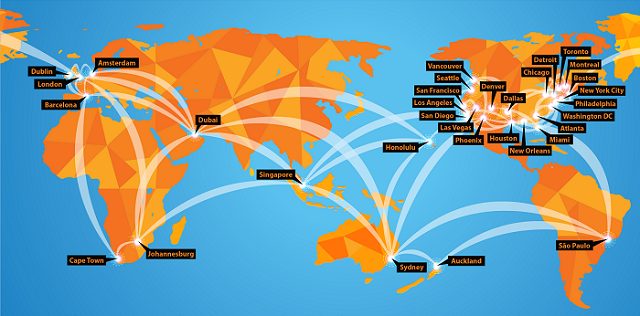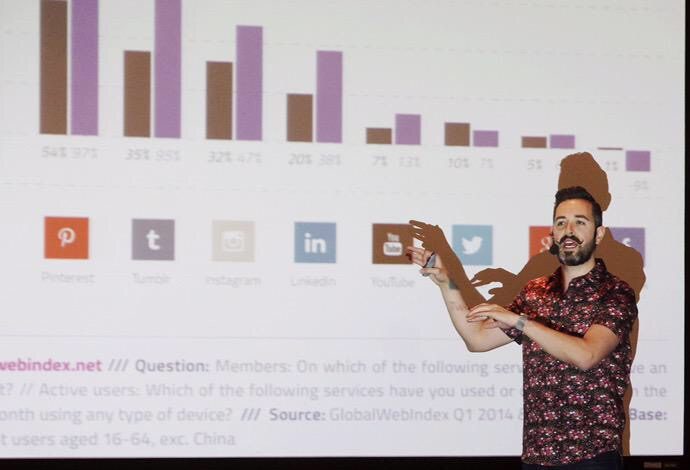Personalization & Privacy: Navigating the Digital Age
In today’s digital world, companies struggle to balance personalization with data protection and online security. As people use more digital services, they want experiences that feel made just for them. But they also worry more about privacy.
The big challenge is using customer data to make things more personal. Yet, we must also respect users’ privacy and follow data protection rules.
To tackle this tricky situation, businesses need to find ways to make things more personal. They also need to make sure they have strong online security in place.
Key Takeaways
- Balancing personalization with data protection is crucial.
- Businesses must adopt robust online security measures.
- Leveraging customer data responsibly is key.
- Personalization enhances customer experiences.
- Data protection and online security are paramount.
The Dual Nature of Digital Personalization
Digital personalization has two sides. It makes users happier and services more efficient, but it also risks their data. On one side, it makes experiences better by matching them to what users like. This makes interactions more fun and relevant.
Enhanced User Satisfaction
This way, users feel understood, which builds a stronger bond with the service or brand. For example, recommendation algorithms on streaming sites suggest movies based on what you’ve watched. This boosts how much users enjoy their time.
Improved Service Efficiency
On the other side, digital personalization makes services better. By looking at user data, services can guess what you need and make things easier. This makes services more straightforward and friendly to use.
But, collecting and using personal data is risky. The more data gathered, the bigger the chance of data breaches. This puts personal information security at risk.
Surveillance Capitalism
Also, using user data leads to surveillance capitalism. Here, data is treated like a product, often without enough confidentiality assurance. This can hurt trust and privacy.
In summary, digital personalization has many good points but also some downsides. It’s important to find a balance that keeps user customization and security in check.
Understanding the Value Exchange: Data for Services
The digital world works on a simple trade: users get tailored experiences for their data. This deal is key to how online services work. It makes our digital lives more convenient and relevant.
Convenience and Relevance
Users get personalized services that make their online time better. By sharing some data, they get a more streamlined and relevant online space.
Personalized Recommendations
One big plus of this deal is getting personalized recommendations. This makes our online time more fun and engaging.
- Enhanced user engagement
- Improved customer insights
- Revenue optimization through targeted advertising
- Better privacy settings for users
Both users and service providers win when they understand this trade well. It keeps the balance between online security and a tailored user experience.
The Evolution of Personalization & Privacy
Exploring the digital world requires a balance between personalization and privacy. This balance has changed over time. It has moved from simple tracking to advanced behavioral analytics.
First-Generation Tracking Methods
At first, personalization used basic tracking techniques like cookies and IP addresses. These methods were not very good at creating truly tailored experiences.
Modern Behavioral Analytics
The introduction of advanced behavioral analytics changed personalization. It lets businesses understand complex user behaviors. This has made personalization much more precise.
As personalization has grown, so has concern for privacy. Users now pay more attention to how their data is used. This has led to a growing demand for privacy.
Demand for Transparency
There’s a big push for greater transparency in how data is used. Businesses are being asked to be more open and user-focused in their data practices.
The journey of personalization and privacy is ongoing. It’s shaped by new tech and what users want. As we look ahead, data protection and user customization will keep playing key roles.
Key Data Protection Regulations Shaping the Landscape
Digital landscapes are changing fast. Key data protection rules are setting new limits on personalization and privacy. Keeping confidentiality assurance and online security top for digital businesses.
Core Principles and Rights
At the core of these rules are key principles. They focus on being open, getting consent, and the right to move data. These rules give people control over their personal information security, making sure it’s used right.
Compliance Challenges
Even with clear rules, businesses face big challenges. They need to understand the rules well and keep up with changes.
In the U.S., states like California and Virginia are leading the way. They’ve made their own data protection laws, showing others what to do.
Federal Regulatory Outlook
The federal government is working on a big data protection plan. They want a single rule for everyone. This will make it easier for businesses to follow the rules and keep things secure.
Healthcare Data Protection
Healthcare data gets extra protection under HIPAA. Keeping health info safe is key. Healthcare providers must use strong security to protect patient data.
Financial Information Safeguards
Financial info also gets special protection, like under the Gramm-Leach-Bliley Act. Banks and other financial places must keep customer info safe to keep trust and follow the law.
In short, data protection rules are very important for the digital world. By following these rules, businesses can keep personal information security strong and keep their customers’ trust.
Ethical Data Collection Practices
Digital landscapes are changing fast. Businesses now focus on collecting data ethically. They aim to offer personalized services while protecting user privacy.
To find this balance, companies use several strategies. Clear privacy policies are key. They tell users how their data is used and collected.
Clear Privacy Policies
Clear privacy policies build trust. They show users how data is handled.
Data Usage Explanations
Explaining how data is used helps users. It shows how their info helps create a customized user experience.
Companies should avoid “dark patterns.” These are manipulative designs. Instead, they should make privacy settings easy to use. This lets users control their data.
Consent Management Platforms
Consent management platforms help manage user consent. They ensure companies follow data protection rules.
Data Minimization Principles
Data minimization means collecting only necessary data. This reduces the chance of data breaches.
Purpose Limitation Strategies
Purpose limitation means using data only for its intended purpose. This boosts user privacy and trust.
By following these ethical data practices, businesses can meet data protection rules. They also build trust with their users.
- Implement transparent data practices
- Provide clear explanations of data usage
- Avoid manipulative design patterns
- Use consent management platforms
- Adopt data minimization and purpose limitation strategies
Building Privacy-Centric Personalization Strategies
Digital landscapes are changing fast. Businesses now focus on privacy-centric personalization. The goal is to balance user experience with data protection. This balance is key to success.
Proactive Prevention Measures
Protecting user data is essential. This means regular security audits and penetration testing. These steps help find and fix vulnerabilities early.
End-to-End Security
End-to-end security is crucial. It keeps data safe while it’s moving and when it’s stored. Encryption is a big part of this.
Data masking helps keep data safe. It hides sensitive information. This way, businesses can still analyze data without risking user privacy.
- Dynamic data masking
- Static data masking
- On-the-fly data masking
Aggregation Approaches
Aggregation approaches mix data to hide individual identities. This way, businesses can learn from data without risking privacy.
On-Device Analysis
On-device analysis is a privacy-focused method. It processes data on the user’s device. This reduces the need for data sharing and storage.
Decentralized Data Models
Decentralized data models, like blockchain, are secure and open. They give users control over their data. This builds trust and keeps information safe.
By using these strategies, businesses can create privacy-centric personalization. This approach meets regulations and builds trust with customers.
Consumer Strategies for Managing Personal Privacy
Managing personal privacy is more important than ever. With more digital services, protecting personal info is key.
Browser Privacy Controls
Using browser privacy controls is a good start. Modern browsers have features like tracking protection. For example, “Do Not Track” stops websites from tracking you.
App Permissions Management
It’s important to manage app permissions. Check what permissions apps ask for and only allow what’s needed. This helps prevent data misuse.
Using Virtual Private Networks (VPNs) and encrypted communications is also vital. VPNs are great for public Wi-Fi networks.
Privacy-Focused Browsers
Choosing privacy-focused browsers is another smart move. Browsers like Tor or Brave block trackers and ads, offering better privacy.
Recognizing Data Collection Signals
Knowing data collection signals is crucial. Understanding when and how data is collected helps you make better online choices.
Evaluating Privacy Policies
Lastly, evaluating privacy policies is essential. Read and understand the privacy policies of services you use. Look for clear info on data use and protection.
By using these strategies, you can greatly improve your online privacy. It’s all about being proactive and informed in the digital world.
Technologies Enabling Secure Personalization
New technologies are making it easier to personalize services securely. This is key in today’s digital world. People want services tailored to them but also want their data kept safe.
Technologies like differential privacy and homomorphic encryption are being used to keep data safe. Differential privacy makes sure data can’t be linked to a single user. Homomorphic encryption lets data be processed without being decrypted, keeping it safe.
Implementation Challenges
But, using these technologies is not easy. Companies face technical hurdles and must make sure their systems work with new security measures. They also need experts to set up and manage these systems.
Statistical Protection Methods
Methods like data anonymization and aggregation are crucial for protecting data. They help businesses get insights without revealing who the data belongs to.
Real-World Applications
Many companies are using these technologies to improve personalization. For example, some use blockchain for secure user profiles. Others use AI-driven analytics for personalized suggestions without risking data security.
Self-Sovereign Identity
The idea of self-sovereign identity is becoming more popular. It lets users control their data. This way, they can choose who sees their information, improving privacy and security.
Consent Tracking
Good consent tracking is key to respecting user choices. Tools that make it easy to manage consent help companies follow data rules and gain customer trust.
By using these technologies, businesses can offer personalized services while keeping data safe. As the digital world keeps changing, the need for secure personalization will grow. This will lead to more innovation in keeping data protected.
Building Consumer Trust Through Privacy Practices
In today’s digital world, it’s key for businesses to earn consumer trust. They must focus on confidentiality assurance to keep customers loyal over time.
Layered Notice Approaches
Using layered notice approaches is a smart move. It gives users clear info on how data is collected and used. This helps users make smart choices about their data, boosting trust and transparency.
Visual Privacy Indicators
Visual privacy indicators are also vital. They show users how a company handles their data through simple visuals. This makes it easier for users to grasp how their data is used.
Privacy certifications are important too. They show a company’s dedication to privacy. Getting recognized certifications proves a business follows top privacy standards.
Transparency Reports
Sharing transparency reports helps keep trust alive. These reports detail how data is collected and used. They help build trust and accountability.
Incident Response Planning
Having a solid incident response plan is crucial. It helps protect customer data. With a good plan, businesses can quickly handle data breaches and reduce harm to customers.
Customer Communication Strategies
Good customer communication strategies are essential. Companies need to talk clearly and openly about data practices. This ensures users feel informed and in charge of their data.
By using these strategies, businesses can create strong bonds with their customers. These bonds are built on trust, openness, and a focus on Personalization & Privacy.
Case Studies: Successful Personalization with Privacy
Studies show that you can personalize without losing privacy. Many companies have found ways to do this. They use strong data protection while still offering personalization.
App Tracking Transparency
App Tracking Transparency is a great example. It lets users control their data across apps. This builds user trust and follows new privacy rules.
On-Device Intelligence
On-Device Intelligence is another smart move. It uses AI right on the user’s device. This cuts down on data sharing, making things safer.
Some companies let users search without tracking them. This keeps privacy safe while still offering a good search experience.
Profitable Privacy Protection
It’s also good for business to focus on privacy. Companies that protect user data gain more trust and loyalty. This can lead to more profits over time.
Preference-Based Suggestions
Preference-Based Suggestions are another way to personalize. They use what users like, not what they do. This way, companies can offer a good experience while keeping privacy settings safe.
User Control Features
Having User Control Features is key. It lets users manage their privacy. This builds trust and makes sure personalization meets user needs.
These examples show that you can personalize well while keeping privacy and data protection in mind. It’s all about finding the right balance.
Future Trends in Personalization & Privacy
Future trends in personalization and privacy will be shaped by what consumers want. They want customized experiences and confidentiality assurance. As technology gets better, businesses are finding ways to meet these needs.
Intentional Data Sharing
People are now more careful about the data they share. They want to know how it will be used and what they get in return. This change is making companies focus more on privacy.
Value-Based Exchanges
The idea of value-based exchanges is becoming popular. It means people get something useful in return for their data. This new way of doing things is changing how businesses and customers interact.
With AI making personalization better, there’s a need for algorithmic transparency and bias prevention measures. Companies are using new tech to make sure their algorithms are fair and accountable.
User-Controlled Digital Identity & Cross-Platform Privacy Management
New trends include user-controlled digital identity and cross-platform privacy management tools. These tools help people manage their privacy on different platforms and services.
In conclusion, the future of Personalization & Privacy is about finding a balance. It’s about giving users what they want while keeping their information safe. By following these trends, businesses can earn their customers’ trust and stay competitive.
Conclusion: Striking the Right Balance
The digital age brings a challenge: balancing personalization with strong privacy. Data protection and user customization are now linked. They are key to a successful digital strategy.
Businesses can build trust by focusing on online security and personal information security. This leads to customized user experiences that respect privacy. It also boosts engagement and loyalty.
The future of Personalization & Privacy is about using technologies that balance these areas. Companies that focus on privacy do well in a changing data protection world.
Getting the balance right between personalization and privacy is crucial. It benefits both businesses and users. This way, we can have a digital world that is both personalized and safe.
FAQ
What is the importance of balancing personalization and privacy in the digital age?
Balancing personalization and privacy is key. It lets businesses use customer data for better experiences. At the same time, it respects user privacy, building trust and following data protection rules.
How does digital personalization impact user satisfaction and service efficiency?
Digital personalization makes users happier by giving them content that matters. It also makes services better by making interactions smoother. This is why it’s great for businesses wanting to improve customer experience.
What are the drawbacks of digital personalization, particular concerning data vulnerability and surveillance capitalism?
The downsides include data risks, as personalized info can get stolen. There’s also surveillance capitalism, where data is used for profit without clear consent or openness.
How do data protection regulations shape the digital landscape?
Laws like GDPR and CCPA set rules for data use. They guide how businesses handle user data, pushing the digital world towards more privacy.
What are some ethical data collection practices that businesses can adopt?
Good practices include clear privacy policies and explaining how data is used. Avoiding tricks and getting consent right are also key. These steps help build trust with users.
How can businesses build privacy-centric personalization strategies?
Businesses can focus on security, data protection, and privacy. Using secure methods and keeping data safe are important. This ensures personalization doesn’t harm privacy.
What consumer strategies can help manage personal privacy online?
Users can protect their privacy by using browser controls and managing app permissions. VPNs and encrypted chats help too. Being informed about data collection and checking privacy policies is also important.
What technologies enable secure personalization?
Technologies like differential privacy and homomorphic encryption keep data safe. Self-sovereign identity and consent tracking also boost privacy. These tools protect user data during personalization.
How can businesses build consumer trust through privacy practices?
Trust is built by being open about data use and showing privacy efforts. Visual indicators and certifications help. Transparency reports and good customer communication are also key.
What are some successful case studies of personalization with privacy?
Companies have shown it’s possible to personalize without sacrificing privacy. They’ve used app tracking, on-device intelligence, and more. These examples prove personalization and privacy can go hand in hand.
What future trends are expected in personalization and privacy?
The future looks bright with trends like intentional data sharing and value exchanges. Algorithmic transparency and bias prevention are also on the horizon. These changes aim to improve both personalization and privacy.





































No comments